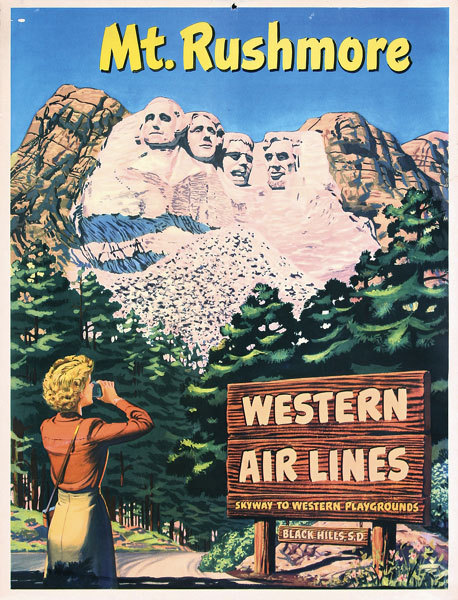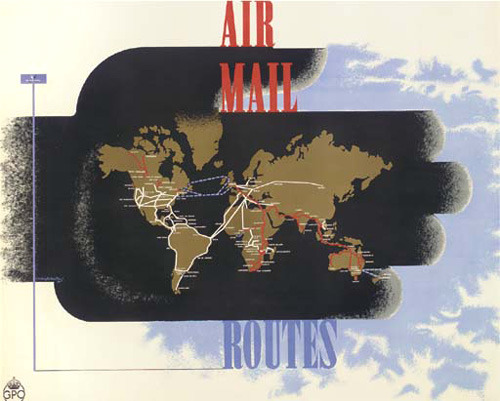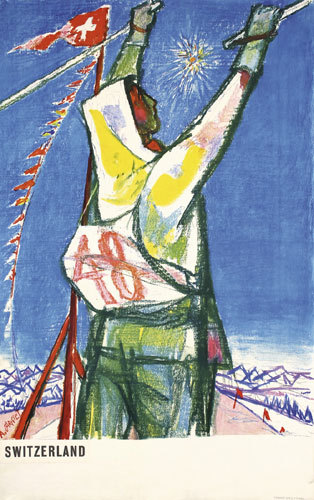Photo

Today in History: Andy Warhol died in 1987
31 years ago today, one of the most influential artists of the second half of the 20th century, passed away. Andy Warhol (born Andrew Warhola in Pittsburgh, Pennsylvania) was a pioneer of the Pop Art movement of the 1960s and a cultural icon. Warhol studied at the Carnegie Institute of Technology in Pittsburgh before moving to New York in 1950. His studio, commonly known as "The Factory," was a famous meeting place for New York artists, intellectuals and celebrities. From the mid-1960s on, Warhol no longer painted much himself. He produced a number of underground films, including "Chelsea Girls" (1966) and "Trash" (1970) and even managed a punk rock band, The Velvet Underground. Warhol passed away in Manhattan on February 22, 1987.
For inquiries, email [email protected].
https://goo.gl/YC5rQA
2 notes
·
View notes
Photo

Today in History: Planes banned from flying over White House in 1935
83 years ago today, President Franklin D. Roosevelt banned all airplanes from flying over the White House. His reasoning? Supposedly, the planes were disrupting president's sleep. The ban is still in effect today, serving a greater purpose of national security
https://goo.gl/YC5rQA
2 notes
·
View notes
Photo

Today in History: Polaroid introduces the instant camera in 1947
61 years ago today, Polaroid founder Edwin Land first demonstrated the instant camera at a meeting of the Optical Society of America in New York City.The American scientist got his idea while vacationing in Mexico in 1944 when he introduced his daughter Jennifer to the basic principles of photography. Inspired by his daughter’s question why the images taken with the camera could not be seen immediately, Land spent his remaining vacation working on a preliminary design and concept for an instant camera. Although dismissed by most of his peers as a gimmick, the first Polaroid camera hit the market only one year later in November of 1948. By 1956, Polaroid had sold one million instant cameras. Today, that number has grown to over 165 million.
For inquiries, email [email protected].
https://goo.gl/YC5rQA
2 notes
·
View notes
Photo

Today in History: North German Lloyd founded in 1857
161 years ago today, the German shipping company Norddeutscher Lloyd (NDL) (North German Lloyd) was founded by Henrich Meier and Eduard Crüsemann in Bremen. NDL became one of the most important German shipping companies of the late 19th and early 20th centuries. The passenger shipping line served North- and South America, East Asia and Autralia. In 1970, NDL merged with Hamburg America Line (HAPAG) to form Hapag-Lloyd AG.
https://goo.gl/YC5rQA
0 notes
Photo

Today in History: Opening of the Panama Pacific International Exposition in San Francisco
103 years ago today, the Panama-Pacific International Exposition opened its doors to the public. This 1915 “World’s Fair” celebrated the completion of the Panama Canal, the discovery of the Pacific Ocean 400 years prior, and San Francisco’s reconstruction following the great earthquake of 1906. The exposition continued through December 4, 1915 and was considered a huge economic success, helping the entire Bay Area getting back on its feet. The fair covered an area of 76 city blocks (630 acres) where hundreds of buildings featured exhibits related to industry, modernization and the arts. Among the exhibits were the first steam locomotive, purchased by Southern Pacific Railroad, and the Liberty Bell (taken by train from Philadelphia). The expo’s centerpiece was the Tower of Jewels, a structure standing 43 stories tall and covered with more than 100,000 free-swinging bits of cut glass "jewels." Most attractions were taken down in late 1915. The Palace of Fine Arts was the only surviving building on the Expo grounds and has been completely reconstructed in the 1960s. https://goo.gl/YC5rQA
0 notes
Photo

Today is Presidents Day
Presidents Day is a federal holiday which, in the United States, is observed on the third Monday in February. This day is set aside, by more and more of America’s population, to honor all of the past United States Presidents that have served our country. Two of our nation’s greatest Presidents, George Washington and Abraham Lincoln, are brought to mind as we celebrate this day. Their birth dates, which fall close to this same time, have been celebrated for decades with public ceremonies in Washington, D.C. and throughout the United States.
For inquiries, email [email protected].
https://goo.gl/YC5rQA https://goo.gl/GXcrV8
0 notes
Photo

Today in History: First Ironman in Hawai in 1978
40 years go today, the first "Ironman Triathlon" was held in Kailua-Konain, The world championship has been held annually since 1978 (with an additional race in 1982) and is preceded by a series of qualifying Ironman events. The race consists of a 2.4-mile (3.86 km) swim, a 112-mile (180.25 km) bicycle ride and a marathon 26.22-mile (42.20 km) run, raced in that order and without a break. It is widely considered one of the most difficult one-day sporting events in the world. Most Ironman events have a limited time of 17 hours to complete the race. The race typically starts at 7:00 a.m.; the mandatory swim cut off for the 2.4-mile (3.86 km) swim is 9:20 a.m. (2 hours 20 minutes), the mandatory bike cut off time is 5:30 p.m. (8 hours 10 minutes), and the mandatory marathon cut off is midnight (6 hours 30 minutes). Any participant who manages to complete the triathlon in these timings is designated an Ironman. Source: wikipedia.org
For inquiries, email [email protected].
https://goo.gl/YC5rQA
0 notes
Photo

Today in History: First Official Air Mail Flight in 1911
107 years ago today, the first official flight with air mail takes place in Allahabad, British India when 23-year old French pilot Henri Pecquet transported 6000 letters and postcards in his biplane from Allahabad to Naini, some 6 miles (10 km) away.
https://goo.gl/YC5rQA
0 notes
Photo

Today in History: Premiere of "Madame Butterfly"
It was not all smooth sailing for Giacomo Puccini's opera "Madame Butterfly" at its world premiere at La Scala in Milan, Italy in 1904. Quite the opposite, the opening was interrupted by its hostile audience's disapproving shouts, boos and whistles. Italian newspapers commented that "the spectacle given in the auditorium seemed as well organized as that on the stage since it began precisely with the beginning of the opera." It was only after Puccini had considerably shortened his opera that it became a huge success. To date, Madame Butterfly is a staple of the standard opera repertoire. Puccini's sentimental music helped foster the unbroken popularity of the Japanese tragedy of the Geisha Cio-Cio-San and U.S. Naval officer Pinkerton. Madame Butterfly followed equally successful Puccini operas like "La Boheme" (1896) and "Tosca" (1900).
For inquiries, email [email protected].
https://goo.gl/YC5rQA
0 notes
Photo

Today is National Hippo Day
Did you know that Hippo loosely translates to "River Horse" in ancient Greek? National Hippo Day celebrates the third largest mammal on Earth. Go ahead and waddle in a mud bath, get angry with some tourists, or just yawn a lot whilst opening your mouth really-really widely ....
For inquiries, email [email protected].
https://goo.gl/YC5rQA https://goo.gl/GXcrV8
0 notes
Photo

Happy Valentine's Day!
https://goo.gl/YC5rQA https://goo.gl/GXcrV8
For inquiries, email [email protected].
0 notes
Photo

Today is World Radio Day
WRD Day is about celebrating radio’s unique power of touching lives and bringing people together across the globe. #WorldRadioDay was proclaimed in November 2011 by UNESCO's General Conference (Wikipedia).
For inquiries, email [email protected].
https://goo.gl/YC5rQA https://goo.gl/GXcrV8
0 notes
Photo

Today in History: Bombing of Dresden in 1945
73 years ago today, a series of Allied firebombing raids begins against the German city of Dresden, reducing the “Florence of the Elbe” to rubble and flames, and killing as many as 135,000 people. It was the single most destructive bombing of the war—including Hiroshima and Nagasaki—and all the more horrendous because little, if anything, was accomplished strategically, since the Germans were already on the verge of surrender.
Among the conclusions reached at the February 1945 Yalta Conference of the Allied powers was the resolution that the Allies would engage in concerted strategic bombing raids against German cities known for war-production and manufacturing, in an effort to bring the Nazi war machine to a crashing halt. The tragic irony of the raid on Dresden, a medieval city renowned for its rich artistic and architectural treasures, is that during the war it had never been a site of war-production or major industry. Both Allies and Germans alike have argued over the real purpose of the firebombing; the ostensible “official” rationale was that Dresden was a major communications center and bombing it would hamper the German ability to convey messages to its army, which was battling Soviet forces at the time. But the extent of the destruction was, for many, disproportionate to the stated strategic goal—many believe that the attack was simply an attempt to punish the Germans and weaken their morale.
More than 3,400 tons of explosives were dropped on the city by 800 American and British aircraft. The firestorm created by the two days of bombing set the city burning for many more days, littering the streets with charred corpses, including many children. Eight square miles of the city was ruined, and the total body count was between 35,000 and 135,000 (an approximation is all that was possible given that the city was filled with many refugees from farther east). The hospitals that were left standing could not handle the numbers of injured and burned, and mass burials became necessary. Source:
www.history.com
https://goo.gl/YC5rQA https://goo.gl/GXcrV8
0 notes
Photo

Today in History: Fountain Pen patented 134 years ago
On 12 February 1884, New York insurance salesman Lewis Waterman patented a groundbreaking invention, the fountain pen. Waterman's instrument was a winner: it did not require constant dipping into the ink well and almost eliminated any ink spills. Writing instruments that contained their own ink supply already existed in the early 18th century. Today's oldest surviving fountain pen was designed by the Frenchman M. Bion and dates back to 1702. The first American patent for a pen was awarded in 1809 to P. Williamson, a Baltimore shoemaker. After 1850, there was a steady stream of new fountain pen patents and pens in productions. But while early fountain pens were plagued by ink leaks and other failures that left them impractical to use and difficult to sell, it was Waterman's patent that promoted the fountain pen to a widely popular writing instrument.
For inquiries, email [email protected].
https://goo.gl/YC5rQA https://goo.gl/GXcrV8
1 note
·
View note
Photo

Today is National #Umbrella Day
The umbrella keeps us dry from the rain and can also protect us from the heat of the sun. The basic umbrella was invented some 4000+ years ago, evidenced in ancient art of Egypt, Greece and China (the Chinese were the first to waterproof umbrellas). The first umbrella shop - James Smith and Sons - opened in 1830 and is still located in London, England.
For inquiries, email [email protected].
https://goo.gl/YC5rQA https://goo.gl/GXcrV8
1 note
·
View note
Photo

Tonight is the Opening Ceremony of the XXIII Olympic Winter Games
Millions of people around the world will tune in to watch the festivities and celebrate the beginning of “the world’s greatest sporting event.” The 2018 Winter Games will be hosted by Pyeongchang, South Korea.
The first Olympic Games took place in Ancient Greece in 776 BC. Historians believe there was just one event—a short sprint called the “stadion.” The modern-day Olympic Games began in 1896. Today, over 10,000 athletes from over 200 countries compete for a coveted gold medal.
Inquiries about this original, vintage poster at [email protected]
https://goo.gl/YC5rQA
0 notes
Photo

Today in History: Southern Pacific completes "Sunset Route" in 1883
135 years ago today, Southern Pacific Railroad completed its transcontinental “Sunset Route” from New Orleans to California, consolidating its dominance over rail traffic to the Pacific.
One of the most powerful railroad companies of the 19th century, the “Espee” (as the railroad was often called) originated in an ambitious plan conceived in 1870 by the “Big Four” western railroad barons: Collis P. Huntington, Charles Crocker, Leland Stanford, and Mark Hopkins. A year earlier, the Big Four’s western-based Central Pacific had linked up with the eastern-based Union Pacific in Utah, creating the first transcontinental American railway. With that finished, the “Big Four” began to look for ways to increase their control over West Coast shipping, and decided to focus their efforts on extending the California-based Southern Pacific southward.
By 1877, the Southern Pacific controlled 85 percent of California’s railroad mileage. Huntington, who now dominated the company, saw an excellent opportunity to create a transcontinental line through the southern United States. Huntington had to act fast if was to beat the competition. The Texas and Pacific Railroad was already pushing westward toward the Pacific at a fast pace. Marshalling his awesome energy and financial resources, Huntington began driving his Southern Pacific line eastward. He won the race in 1881, when he linked the Southern Pacific to the Santa Fe Railroad at Deming, New Mexico, creating the second American transcontinental railway. Two years later, on February 5, 1883, Huntington gained full control of a number of smaller railroads, creating the Southern Pacific’s “Sunset Route” from New Orleans to California.
With the “Sunset Route,” Huntington confirmed his domination over California rails. He had taken considerable financial risks to build the Southern Pacific system, and he collected very considerable financial rewards. The Southern Pacific had a near monopoly over rail service to California, and Huntington and his associates took advantage of the situation by charging high shipping rates.
Termed “the Octopus” for its tentacled stranglehold on much of the California economy, the Southern Pacific inspired Californians to create some of the first strong public regulations over railroads in American history. But despite the anger and outrage Huntington’s exploitation inspired, few would deny that the mighty Southern Pacific Railroad played an essential role in fostering the growth of a vibrant California economy for decades to come.
Source: www.history.com.
For inquiries, email [email protected]
https://goo.gl/YC5rQA https://goo.gl/GXcrV8
1 note
·
View note